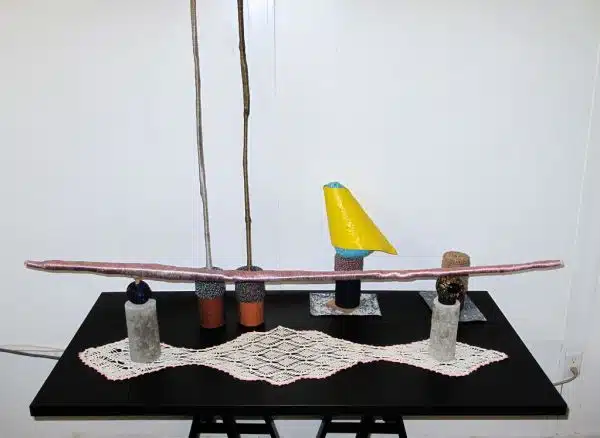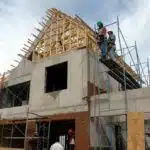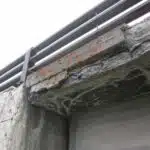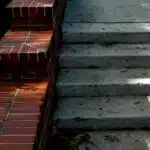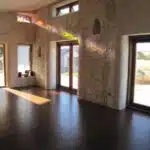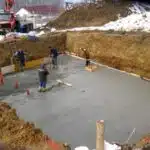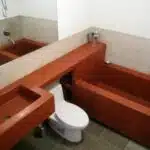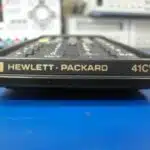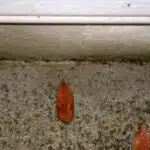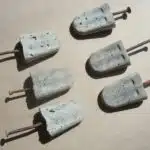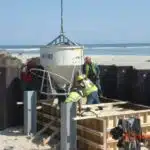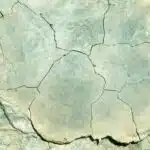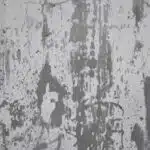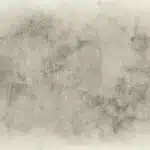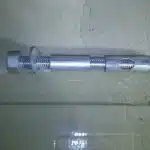Concrete tabletops are a popular choice for those seeking a durable and stylish addition to their home decor. While pre-made concrete countertops can be expensive, the DIY route offers an affordable and customizable alternative. With some basic tools and materials, building a DIY concrete tabletop can be a relatively straightforward process.
Before beginning the project, it is important to understand the steps involved in creating a successful concrete tabletop. This includes proper preparation of the surface, selecting the right materials and tools, and following the correct mixing and pouring techniques. In this article, we will provide step-by-step instructions on how to build your own DIY concrete tabletop that is sure to impress guests while serving as a functional piece of furniture in your home.
Planning Your Project: Measurements And Design
When it comes to building your own DIY concrete tabletop, the first step is planning your project. This involves taking accurate measurements and sketching out a design for your tabletop. By doing this, you can ensure that your finished product is both functional and aesthetically pleasing.
To begin, take precise measurements of the space where you plan to place your tabletop. This includes measuring the length, width, and height of the area. Once you have these measurements, use them to create a rough sketch of your tabletop design. Keep in mind any specific features or details that you want to include, such as a decorative edge or inset tiles.
Next, finalize your design by creating a more detailed sketch. This should include all necessary measurements and specifications for your tabletop. Consider factors such as thickness, curvature, and reinforcement options when creating this final design. With this step complete, you’ll be ready to move on to choosing materials and tools for the job.
Choosing Your Materials And Tools
As you move forward with your DIY concrete tabletop project, you need to start thinking about choosing materials and selecting tools. The right combination of these two elements will determine the success of your project, so it’s important to pay close attention to this stage.
When it comes to choosing materials, you’ll want to consider a few factors. First and foremost is the type of concrete mix that you’ll use. Look for a high-quality mix that’s designed for countertops or tabletops, as this will give you the best results. You’ll also need to choose reinforcing materials such as mesh or rebar, as well as any decorative elements like pigment or aggregate.
Selecting tools is another crucial step in the process. Your exact needs will depend on the specifics of your project, but some essential tools include a mixer (if you’re using a bagged mix), trowels for spreading and smoothing the concrete, and sandpaper for finishing. You may also want to invest in diamond polishing pads if you’re going for a polished finish.
In preparation for beginning your work area, it’s important to ensure that everything is clean and clear of debris. This includes sweeping or vacuuming the floor where you plan to work and wiping down any surfaces that may come into contact with your concrete mixture. Properly preparing your work area sets you up for success throughout the rest of the project.
Preparing Your Work Area
Before starting your DIY concrete tabletop project, it is crucial to prepare your work area. The first thing you need to consider is the space where you will be working. It should be well-ventilated and have enough room for all the materials and tools you will be using. If possible, choose a spot that has easy access to water and electricity.
Next, you need to prepare your work surface. You can use a piece of plywood or MDF as your work surface. Make sure it is sturdy enough to support the weight of the concrete mix and large enough to accommodate your tabletop’s size. Cover it with plastic sheeting or a drop cloth to protect it from spills.
Safety precautions should also be observed when preparing your work area. Wear protective gear such as gloves, safety glasses, and a dust mask when handling concrete mix. Keep children and pets away from the work area. Also, make sure that you have an adequate supply of fresh air circulating in the workspace.
As you prepare your work area for your DIY concrete tabletop project, remember that safety should always come first. Taking the time to set up your workspace correctly can help ensure a successful project without any accidents or injuries. With everything in place, it’s time to move on to creating a form for your tabletop.
Creating A Form For Your Tabletop
Now that you have prepared your work area, it is time to move on to creating a form for your tabletop. Before you start, make sure that the surface where you will be working is level and clean. It is essential to take your time when creating the form as it will determine the shape and size of your table.
To create a decorative edge on your tabletop, use a router or circular saw with a straight edge guide. The edge of the tabletop can be curved or straight depending on your preference. You can also use reusable forms made from plastic or wood to create different shapes for your tabletop. This way, you won’t have to keep buying new forms every time you want to make a different design.
Here are some helpful tips when creating a form for your tabletop:
- Use materials that won’t warp or bend under pressure.
- Ensure that the form walls are at least two inches thick.
- Use screws instead of nails when assembling the form walls for easy removal.
- Apply release agent on both sides of the form walls before pouring in concrete.
Creating a form for your tabletop can be an exciting process as it allows you to experiment with different designs and shapes. With reusable forms and a bit of creativity, you can achieve any design that suits your style. In the next section, we will discuss measuring and mixing concrete, which is crucial in ensuring that your tabletop comes out perfectly.
Measuring And Mixing Your Concrete
The success of your concrete tabletop project is largely dependent on the accuracy of your measurements and the mixing consistency of your concrete. Before you begin mixing, make sure to have all your tools and materials ready. This includes a measuring tape or ruler, a mixing container, a drill with a mixing attachment, water, and a bag of concrete mix.
To begin the mixing process, add one part water to five parts concrete mix in your container. Use the drill with the mixing attachment to blend the mixture thoroughly until it reaches a smooth and consistent texture. The ideal consistency for concrete tabletops is typically thick but still pourable. If you find that the mixture is too thick or dry, add small amounts of water incrementally until it reaches the desired texture.
If you want to add color additives to your concrete mix, now is the time to do so. Follow the instructions on the package carefully and start with small amounts until you achieve your desired hue. Keep in mind that adding color can affect both the drying time and final appearance of your tabletop. Once you are satisfied with your mixture’s consistency and color (if added), proceed to pouring it into your form following proper guidelines.
As you move forward with pouring your concrete into the form, take care not to overfill it as this can cause unevenness or cracking later on. Ensure that all corners and edges are filled completely before smoothening out any air pockets or bumps using a trowel or float tool. With these steps completed successfully, you’re well on your way towards achieving an impressive diy concrete tabletop project that will last for years to come!
Pouring Your Concrete Into The Form
Once you have thoroughly mixed your concrete, it is time to pour it into the form. Begin by pouring the mixture into the center of the form and spreading it out evenly with a trowel. Ensure that the corners and edges are completely filled, using a screed board to level out any excess concrete on top.
Allow the concrete to set for at least 24 hours before removing the form. Once removed, you can begin with concrete finishing techniques such as sanding and smoothing. You may also choose to add decorative additives such as dye or aggregate to create a unique look for your tabletop.
Concrete finishing is an important step in creating a smooth and polished surface for your tabletop. Sanding and polishing tools are essential in achieving this desired effect. In addition, applying a sealant will help protect your tabletop from stains and scratches. With these steps completed, you can move on to smoothing and leveling your concrete surface for a professional finish.
Smoothing And Leveling Your Concrete
When working with concrete, it is essential to ensure that the surface is smooth and level. This can be achieved by using a variety of tools and techniques. One popular method is to use a concrete grinder or sander to remove any high spots or bumps on the surface. Another option is to use a self-leveling compound, which can help to fill in any low areas and create a perfectly level surface.
Before beginning the smoothing and leveling process, it’s important to clean the surface thoroughly. This will help to remove any dirt, dust, or debris that could interfere with the adhesion of the leveling compound or stain. Once the surface is clean, you can begin sanding or grinding down any high spots. Be sure to wear protective gear during this step, as concrete dust can be harmful if inhaled.
After sanding down any high spots, you can then apply a self-leveling compound if necessary. This will help to fill in any low areas and create a flat surface for your tabletop. Once the leveling compound has dried, you can then move on to staining options and decorative inlays if desired. With proper preparation and attention to detail during this step, you’ll be able to create a beautiful DIY concrete tabletop that will last for years to come.
As you move forward with your DIY concrete tabletop project, it’s important not to overlook reinforcement for strength. Adding reinforcement such as rebar or wire mesh can help prevent cracking and ensure that your tabletop stays strong over time. In the next section, we’ll discuss how to add reinforcement for added durability and longevity.
Adding Reinforcement For Strength
After achieving a smooth and level surface for your concrete tabletop, it’s time to move on to the next step: adding reinforcement for strength. This is an important step, especially if you plan on using your table for heavy-duty tasks or as an outdoor piece of furniture. Reinforcement will help prevent cracking and ensure the longevity of your DIY project.
One way to add reinforcement is by incorporating wire mesh into your concrete mix. This can be found at most hardware stores and comes in various sizes. When placing the wire mesh, make sure it is positioned evenly throughout the mold and not touching the sides or bottom. This will help maintain its integrity while allowing the concrete to flow around it.
Once you have added reinforcement, you can begin thinking about adding finishes and decorative options to your tabletop. Depending on your personal style, there are many options available such as staining or painting the surface, embedding objects like seashells or tiles into the concrete, or even polishing it for a sleek finish. The possibilities are endless when it comes to customizing your DIY masterpiece!
Now that you have added reinforcement and considered all of your decorative options, it’s time to let your concrete cure properly. This is a crucial step that should not be rushed as it allows the concrete to harden and reach its full strength potential. The curing process typically takes 28 days but may vary depending on factors such as temperature and humidity levels. During this time, be sure to keep the surface moist by covering with plastic sheeting or misting with water regularly. Once fully cured, you can remove from the mold and enjoy your beautiful new concrete tabletop!
Allowing Your Concrete To Cure
Once you’ve poured your concrete tabletop, it’s time to let it cure properly. This is an important step in ensuring the final product is strong and durable. Moisture control is key during the curing process. You’ll want to keep the concrete moist by covering it with plastic or damp burlap for at least three days. This will prevent cracking and ensure uniform strength.
After three days, remove the covering and let the concrete dry out for another four days. During this time, you’ll want to monitor the moisture levels to make sure they’re not too high or too low. If moisture levels are too high, mold or mildew can form on the surface of your tabletop. If moisture levels are too low, your tabletop may crack or become brittle.
Once your concrete has fully cured, it’s time to begin finishing techniques. If you want a smooth surface, use a hand-held polisher with diamond pads to grind down any rough spots or bumps on the surface of your tabletop until it’s completely flat and smooth. Then apply a sealer to protect against water stains and scratches. Alternatively, if you prefer a more natural look, skip the polishing step and instead apply a penetrating sealer that will enhance the natural color and texture of your concrete tabletop.
As you move on to removing the form section, there are some important things to keep in mind that will help ensure success without damaging your new table top.
Removing The Form
After allowing your concrete to cure for at least 48 hours, it is time to remove the form. The form should come off easily if you used a release agent before pouring the concrete. If not, use a pry bar or hammer to gently tap the form away from the concrete. Avoid using excessive force as this may damage the edges of your tabletop.
Once you have removed the form, inspect your tabletop for any imperfections such as air bubbles or uneven surfaces. Use finishing techniques such as sanding and filling with a mix of concrete and water to smooth out any rough spots. You can also use a wet grinder with diamond polishing pads in varying grits to create a polished surface on your tabletop.
Here are some tips to keep in mind when removing your form and finishing your DIY concrete tabletop:
- Wear protective gloves and eye gear during the process
- Apply a sealant after sanding and polishing to protect against stains and scratches
- Use caution when handling heavy pieces of equipment during sanding and polishing
- Take breaks often to avoid overexertion
- Keep the work area clean and free from debris for safety purposes
Moving on to sanding and polishing your tabletop, there are several steps you can take to achieve a professional-looking finish.
Sanding And Polishing Your Tabletop
After the concrete has cured for at least 24 hours, you can begin to sand and polish your tabletop. The first step is choosing the right sandpaper. For a smooth finish, start with a coarse grit sandpaper, such as 80 or 120 grit, and work your way up to a finer grit, such as 220 or 320. Use a sanding block to ensure even pressure and avoid over-sanding any one area.
Once you have sanded the entire surface of the tabletop with the coarsest sandpaper, move on to a finer grit. This will gradually remove any scratches left by the previous grit and create a smoother surface. After using each finer grit, wipe away any dust with a damp cloth before moving on to the next.
When you reach your desired level of smoothness, it’s time to polish the surface of your tabletop. There are several techniques for polishing concrete, including using diamond pads or wet-polishing with an electric polisher. Regardless of which technique you choose, be sure to follow the manufacturer’s instructions carefully and use caution when working with power tools.
Now that your tabletop is sanded and polished to perfection, it’s time to seal it for durability. But before we get into that step, let’s take a closer look at why sealing is important and what options are available for DIYers looking to protect their concrete creations.
Sealing Your Tabletop For Durability
Imagine your concrete tabletop as a precious diamond that needs protection from the elements. Just like how a diamond needs to be polished and cut to reveal its beauty, your concrete tabletop also requires proper sealing to enhance its durability and longevity. Applying sealant is an essential step in protecting the surface of your DIY concrete tabletop from stains, scratches, and water damage.
To ensure that your tabletop remains intact for years to come, it’s necessary to choose the best sealant products available in the market. Concrete sealers are typically categorized as penetrating or topical. Penetrating sealers penetrate deep into the pores of the concrete and offer long-lasting protection from moisture and stains. Topical sealers sit on top of the surface and provide a glossy finish while offering moderate protection against scratches and UV rays.
When applying sealant to your tabletop, make sure that you follow the manufacturer’s instructions carefully. Clean the surface thoroughly with soap and water before applying the sealer. Once you have applied the first coat of sealer, allow it to dry for at least 24 hours before applying additional coats. For optimal results, apply two or three coats of sealer depending on the type of sealer you choose.
With proper sealing, your DIY concrete tabletop will not only look stunning but will also withstand daily wear and tear. Remember that choosing the right sealant product is crucial in ensuring that your table stays beautiful for years. In our next section, we’ll discuss how to install your newly sealed table top onto its base without any hassle!
Installing Your Tabletop
Now that your concrete tabletop is complete and has been allowed to cure, it’s time to install it onto your chosen table base. Carefully place the tabletop onto the base and ensure that it is level. You can add shims or adjust the base as needed to achieve a level surface. Once you’re satisfied with the placement, secure the tabletop to the base using the appropriate hardware.
After installation, you have several sealing options for your concrete tabletop. One popular choice is a penetrating sealer, which sinks into the pores of the concrete and provides long-lasting protection against stains and water damage. Another option is a topical sealer, which sits on top of the concrete and provides a glossy finish while also protecting against scratches and spills. Whichever type of sealer you choose, be sure to follow manufacturer instructions for application.
Finally, decorative finishes can add personality and flair to your diy concrete tabletop. Consider staining or dyeing the surface for a more unique look, or adding inlays or etchings for added texture and interest. The possibilities are endless when it comes to customizing your concrete tabletop! With proper installation, sealing, and finishing techniques, your new table will be durable enough to withstand daily use while also making a stylish statement in your home.
As you enjoy using your newly installed concrete tabletop, it’s important to keep up with maintenance tasks to ensure its longevity. In the next section, we’ll discuss some simple steps you can take to keep your table looking its best for years to come.
Maintaining Your Concrete Tabletop
Once you’ve successfully built your own concrete tabletop, it’s important to maintain it properly to ensure its longevity. Proper cleaning methods and stain prevention techniques are crucial for keeping your tabletop looking great for years to come.
To clean your concrete tabletop, start by wiping it down with a damp cloth. For tougher stains, use a mild soap and water solution or a specialized concrete cleaner. Be sure to avoid abrasive cleaners or tools that could scratch the surface of the table.
Preventing stains is also key in maintaining your tabletop. Consider using coasters under glasses and placing hot dishes on trivets instead of directly on the table. It’s also a good idea to seal your table periodically with a food-safe sealer to protect against spills and stains.
Now that you know how to keep your DIY concrete tabletop looking brand new, let’s move on to troubleshooting common issues that may arise during the building process.
Troubleshooting Common Issues
Fixing cracks is a common issue when building a DIY concrete tabletop. The most common cause of cracks is improper mixing of the concrete or not using enough water during the mixing process. However, even with proper mixing techniques, cracks can still occur due to temperature changes or settling of the concrete over time.
To fix small cracks, you can use a concrete patching compound that can be found at most hardware stores. Simply apply the compound to the crack and smooth it out with a putty knife. For larger cracks, you may need to chisel out the damaged area and fill it in with fresh concrete. It’s important to note that these repairs may not be invisible, so consider staining or painting your tabletop to help hide any imperfections.
When it comes to staining options for your DIY concrete tabletop, there are many choices available. Acid stains are popular because they create a variegated look that mimics natural stone. Water-based stains are also an option and can be easier to work with than acid stains since they don’t require neutralizing after application. Alternatively, you may choose to paint your tabletop for a more uniform color.
| Issue | Solution |
|---|---|
| Cracks | Use a concrete patching compound for small cracks and fill larger cracks with fresh concrete |
| Staining Options | Consider acid stains for a natural stone look, water-based stains for ease of use, or paint for a uniform color |
In summary, fixing cracks in your DIY concrete tabletop can be done with relative ease using specialized patching compounds or fresh concrete. When it comes to staining options, there are many choices available depending on the look you’re trying to achieve. Keep in mind that imperfections may still show through after repairs, so consider staining or painting your tabletop to help hide any flaws.
Conclusion
A DIY concrete tabletop can add a unique and modern touch to any space, but it requires careful planning and preparation. When embarking on this project, start by taking accurate measurements and designing your vision. Choose quality materials and tools, prepare your work area, and create a form for your tabletop.
Once you’ve mixed and poured the concrete, give it time to cure before sealing it for durability. Installing the tabletop is the final step, but ongoing maintenance is crucial to keep it looking its best. With proper care, a concrete tabletop can last for years to come.
Did you know that concrete is the second most widely consumed substance on Earth after water? In fact, according to the Cement Sustainability Initiative, over 4 billion metric tons of cement are produced annually worldwide. By creating your own DIY concrete tabletop, you not only have a unique piece of furniture but also contribute to reducing waste by repurposing materials. As an expert in this field, I encourage everyone to consider creating their own concrete masterpiece.
Image Credits
- “Tabletop medium” by Madilworth (featured)

